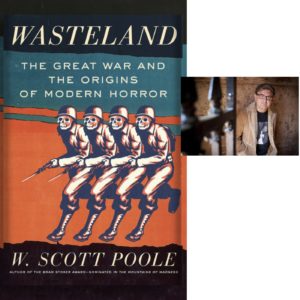Artificial Intelligence academic – “How Smart Machines Think” (MIT Press, 2018) – Sean Gerrish interview
Podcast: Play in new window | Download
Subscribe: Apple Podcasts | RSS

Sean Gerrish is a software engineer and has worked as an engineer for Teza Technologies and as an engineering manager for machine learning and data science teams at Google. We spoke about his latest book on machine learning. Sean’s comments in this interview reflect his views and not necessarily those of his employers.
0:41 – Sean talks about how he got into studying machine learning.
2:26 – Sean talks about the book and how it’s broken down. He touches on self-driving cars, IBM’s Watson, and machines that can play Atari games and so on.
4:31 – Sean talks about the most difficult concepts for people to understand.
6:51 – Sean talks about what intelligence in machines is.
12:01 – Sean talks about machine learning and the future of robots that can think for themselves.
15:39 – Sean talks about the large amount of labor needed to create machines that learn.
18:53 – Sean talks about AI and the marketplace.
24:01 – Sean talks about how he did the research for the book.
28:46 – Sean talks about a problem he grappled with in the research.
32:02 – The book has a sci-fi related Easter egg.
39:16 – Sean can be found on twitter @seannyg, and he writes frequently on Quora.
For more of “The Art and Design of Sci-Fi and Fantasy, Mystery and Horror” please follow me on Facebook at crisalvarezwlc, on youtube at Cris Alvarez and on Instagram @crisalvarezscifi
Guests: Sean Gerrish
Host: Cris Alvarez
Tags: Netflix, Watson, Atari, machine learning, intelligent machines, robots, bladerunner
 Gabriel Eljaiek-Rodriguez teaches Spanish and Latin American studies at the New School in Atlanta, GA. We spoke about his latest book on the politics of Latin American horror films.
Gabriel Eljaiek-Rodriguez teaches Spanish and Latin American studies at the New School in Atlanta, GA. We spoke about his latest book on the politics of Latin American horror films. Scott Poole is a professor of history in American pop and folk culture with a heavy emphasis on horror studies. We talked about his latest book that examines the effect World War One had on horror movies.
Scott Poole is a professor of history in American pop and folk culture with a heavy emphasis on horror studies. We talked about his latest book that examines the effect World War One had on horror movies.